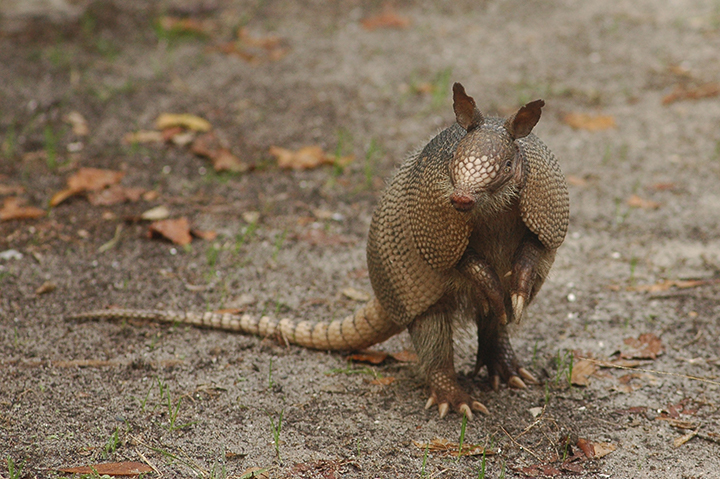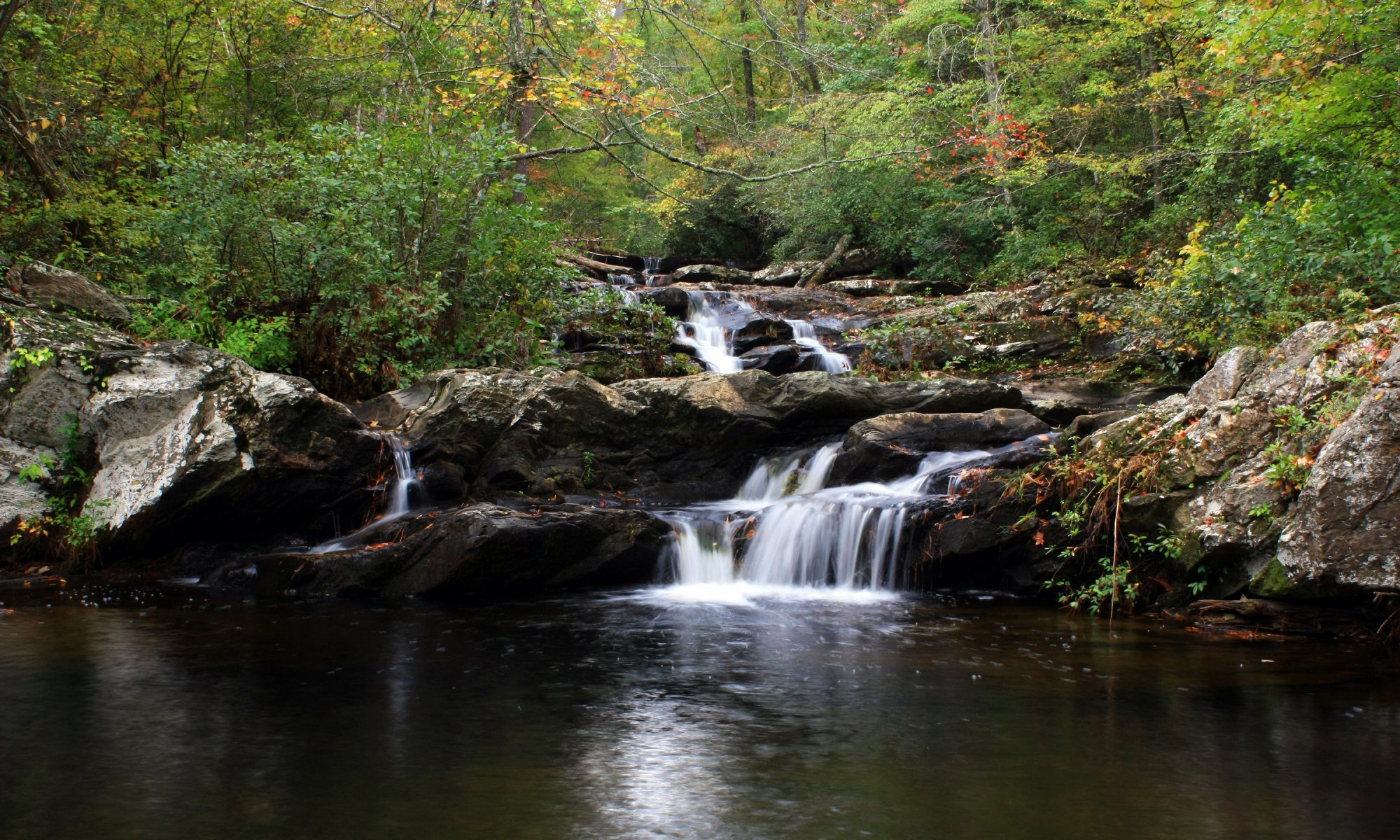
Now that armadillos have made themselves at home here in the mountains of Southern Appalachia, you might be interested to know something about them. First of all, what are they doing here?! Until recently, my experiences with armadillos have occurred exclusively on the coastal plain. Why migrate here? They don’t have the ability to hibernate, and they don’t insulate well from the cold because, unlike most mammals, they don’t have sufficient body fat or a healthy coat to keep them warm. This makes their presence a mystery to me, but I’ve learned that these “little armored ones” have reached as far north as Illinois. I can’t help but wonder if this expansion of range is connected to global warming. I hope researchers can enlighten us.
Even if you’ve not crossed paths with a nine-banded armadillo, perhaps you’ve seen their tracks and not been aware of who left those prints. I’ve seen differing numbers of toes reported by various “trackers,” some saying that there are 3 toes on the forefoot or 4 on the rearfoot. Maybe there are some anomalies out there, but the standard numbers are: 4 toes in front, 5 in the rear. How do I know?
I picked up an armadillo once to learn more about it. All in the name of science, of course. But that rationale means nothing to an armadillo. It would much rather NOT be picked up. By the way, that little feat of derring-do is not recommended because of pathogens that can be transmitted to humans. Plus, if you don’t know how to pick up one of these critters, you might find yourself in a claw-fest. Think of a knife fight against 18 guys named “Mack.” It is also a bad idea to tamper with armadillo scat, which is found as small pellets. Body waste is also a potential source of disease for an over-eager inspector of all-things-natural. Like raccoon scat. And fox urine.
Stalking armadillos and watching them go about their lives is a treat. It’s so easy to do. They just motor around like little Volkswagen Beetles with manic, blindfolded drivers, bumping into things, stopping unexpectedly, changing course, bumping into more things, plowing a trench, and bumping again. When you do see one travel for a few feet uninterrupted, you’ll notice its most regular gait, which is called a “fast stalk.” This means that a rearfoot moves forward, and just as it starts to land, the forefoot on the same side begins its step. Just before that one lands, the rearfoot on the other side starts its step. Just before it lands, the forefoot on that side moves forward. Then the whole process cycles again. It seems nothing like a “stalk,” which implies slow, furtive movement, but it uses the same pattern as a “true stalk,” only faster. This usually places a smaller rearfoot print right behind the larger forefoot print.
If you want to understand this track pattern, get down on all fours and follow the above formula. As you do, pay attention to where your hands and knees leave tracks.
“Armies” eat insect larvae, worms, bugs, butterflies, and ants. (Look at their heads and think about anteaters.) They are great diggers, not only in a food search, but also in digging lots of burrows. Each individual has a number of homes to dodge into. Summer home, winter home, autumn home, spring home, solstice home, equinox home, old folks home, home on the range, etc.
What will be the impact of having armadillos in north Georgia? Stay tuned. I’m hoping for a reduction in fire ants.
Find out more about a lifetime of animal encounters in my Secrets of the Forest book series. Especially check out volume 3.

